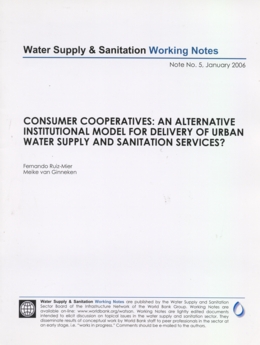|
 This paper describes the essential characteristics of consumer cooperatives engaged in the provision of basic services and discusses their applicability as a model for water supply and sanitation service provision in urban areas. A cooperative is an autonomous association of persons united voluntarily to meet their common economic, social, and cultural needs and aspirations through a jointly-owned and democratically-controlled enterprise. The paper focuses on system-wide urban water supply cooperatives and it is thus not concerned with urban or peri-urban cooperatives that depend on either boreholes or bulk purchases of water from a utility for distribution, nor does it refer to rural water supply cooperatives that are generally small. After a general overview of cooperatives and a discussion of the main characteristics of utility cooperatives, the paper reviews the case of SANGUAPAC, a successful urban WSS cooperative in Bolivia, from which it draws some conclusions in the form of a preliminary assessment of cooperatives as a model for delivery of urban water supply and sanitation (WSS) services. Table of Contents: Summary 1. Introduction 2. An Overview of Cooperatives 3. A Case Study on Saguapac 4. Conclusions: A Preliminary Assessment Annex Saguapac: Performance Indicators Post Date : 05 Juni 2009 |